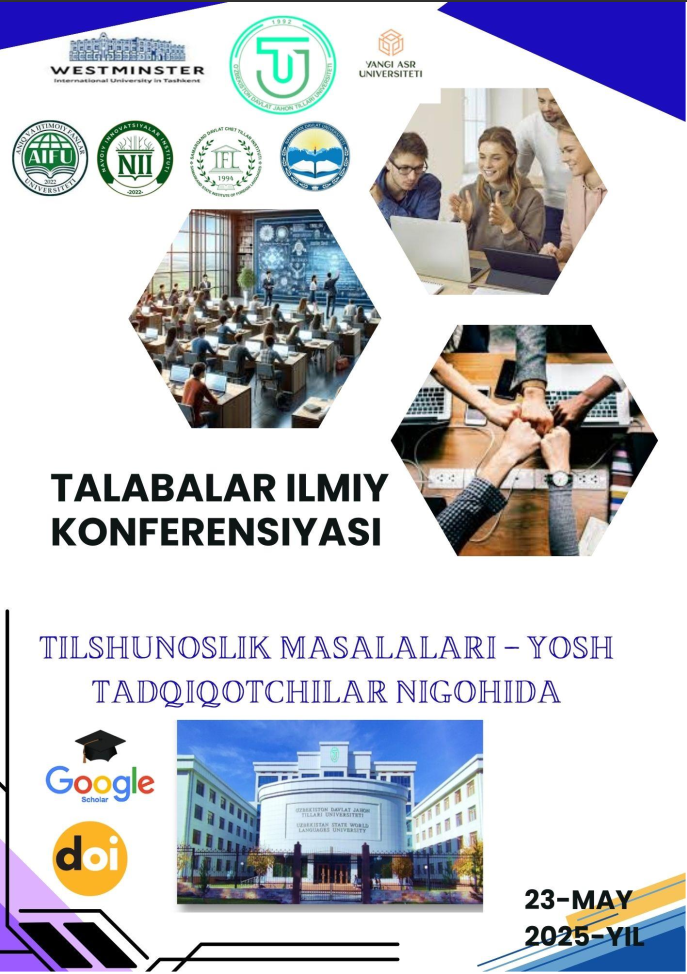TEACHING ADVERB THROUGH PACE MODEL
https://doi.org/10.5281/zenodo.15504947
Kalit so‘zlar
grammar knowledge, model,communication, book widgets, digital programs.Annotasiya
This article outlines the proposed instructional approach for teaching adverbs using the PACE teaching model. The PACE teaching model encompasses four key components: Prepare, Activate, Connect, and Extend. The Prepare phase involves activating prior knowledge and introducing new concepts. The Activate phase aims to engage students through interactive and meaningful experiences. The Connect phase encourages students to make connections between new and existing knowledge. The Extend phase provides opportunities for students to apply, analyze, and synthesize their learning. Therefore, the purpose of this study is to explore the effect of the PACE model teaching and observe students' learning attitudes in grammar class. The significance of this study is to help teachers understand the effect of students and students' attitude of learning Adverb in the PACE model so that teachers can compare with their own teaching effect to make corresponding changes and improve the teaching effect.
Foydalanilgan adabiyotlar ro‘yhati
Abdukhayotovna, A. K. (2022). The Beneficial Angels of Learner-Centered Approach in Prospering Pupils’ Communicative Competence in English Classes at Academic Lyceums. International Journal on Integrated Education, 5(1), 129-135.
Erdanova, Z. (2019). Onomastic is a mirror culture. In Science and practice: a new level of integration in the modern world (pp. 149-152).
Erdanova, Z. (2021). THE PROBLEM OF THE NORMS OF PHRASEOLOGICAL UNITS. Mental Enlightenment Scientific-Methodological Journal, 2021(1), 74-81.
Fixed Ideas: America Since 9.11 (2003; essay first published in the January 16, 2003 issue of The New York Review of Books).
Gulomova, R. (2024). Embracing cultural classes: unveiling the significance of culture in EFL education. O ‘zbekiston davlat jahon tillari universiteti konferensiyalari, 665-671.
Innovative techniques for teaching grammar Muxamedova Gulmira Ismoilovna Bukhara city, school 26 VOLUME 6, ISSUE 11, Nov. -2020
Kholbutayeva, S., & Gulshoda, R. (2025). PEDAGOGICAL INNOVATIONS: HOW TO ENHANCE STUDENT ENGAGEMENT THROUGH KAHOOT?. YANGI O ‘ZBEKISTON, YANGI TADQIQOTLAR JURNALI, 2(7), 141-145.
Rashidova, G. (2024). Scientific ethics and etiquette of uzbek students in writing. Проблемы инновационного и интегративного развития иностранных языков в многоязычной среде, 416-420.
SULTONOVA, M. (2024). On the issue of critical thinking.
Sultonova, M. (2024, October). Features of Critical Thinking Skills for B1 Level Learners. In Conference Proceedings: Fostering Your Research Spirit (pp. 786-790).
Sultonova, M., & Usmonaliyeva, M. (2024). Pragmalinguistics: exploring the social dynamics of language use. O ‘zbekiston davlat jahon tillari universiteti konferensiyalari, 633-638.
To’ychiyev, B., & Mamatkulova, F. (2024). The role of think-aloud strategy in teaching reading comprehension to elementary learners. O ‘zbekiston davlat jahon tillari universiteti konferensiyalari, 161-166.
Xiaoxia, Tian. (2012). The Application of PACE Teaching Model in English Grammar Teaching in Middle School [D]. Wuhan: East China Normal University.

